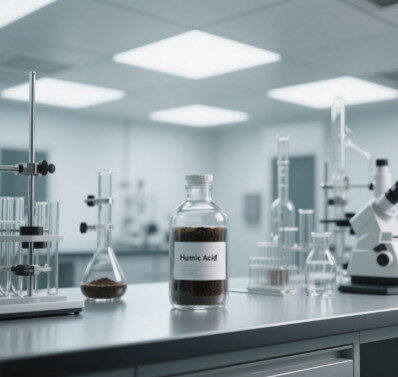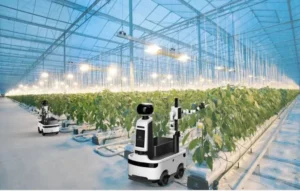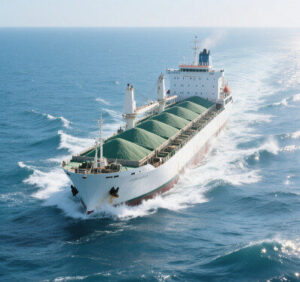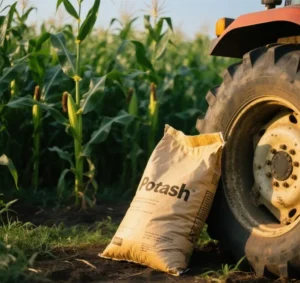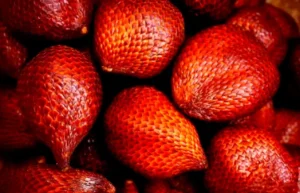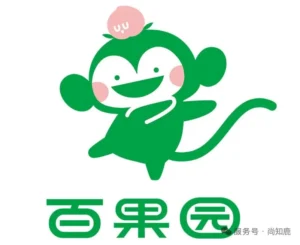Currently valued at $532.7 million, the global humic acid market is projected to surpass $1.1 billion by 2028, driven by an impressive compound annual growth rate (CAGR) of 11.8%. This surge in market value reflects a significant shift toward sustainable agricultural practices and an increased focus on soil health. The Asia-Pacific (APAC) region is emerging as a key growth driver, accounting for approximately 40% of the global market share in 2023. The humic acid industry is thus positioning itself as a cornerstone of modern farming, particularly in countries such as China and India.
China’s government has implemented policies, such as subsidies for organic fertilizers including humic acid products, to encourage farmers to adopt environmentally friendly practices. Consequently, the use of humic acid-based fertilizers has increased as farmers seek to improve soil quality and reduce their dependence on chemicals. In India, the government’s “Soil Health Card Scheme” has raised awareness about soil health, prompting more farmers to use humic acid. These policies, combined with growing agricultural demand, are accelerating the adoption of humic acid in these regions.
The Role of Humic Acid in Modern Agriculture
Humic acid is a natural byproduct of the decomposition of organic matter that plays a pivotal role in enhancing soil fertility. Derived from sources such as peat, lignite, and leonardite, it improves nutrient absorption in plants, reduces phosphate lock-up, and increases nitrogen efficiency. These properties make humic acid an attractive alternative to synthetic fertilizers, which are increasingly criticized for their environmental impact. Additionally, humic acid stimulates microbial activity in the soil by serving as a rich source of organic carbon for microorganisms. This, in turn, supports the growth of beneficial fungi and bacteria, contributing to a healthier ecosystem. In regions prone to drought, humic acid improves soil structure, creating a more porous medium that can hold onto moisture for longer periods, thus enhancing water retention. This ability is particularly valuable, ensuring crops can thrive even in challenging conditions.
Market Dynamics and Regional Trends
Led by China and India, the APAC region dominates the humic acid market. China’s “Zero Growth in Chemical Fertilizers” policy, coupled with shrinking arable land, has led to the widespread adoption of humic acid–based products and reduced reliance on harmful chemicals. India is also experiencing robust demand growth, driven by rising awareness of sustainable farming practices. Collectively, the APAC region is expected to consume 270,000 tons of humic acid by 2028, which will solidify its position as the largest market.
North America, with its robust organic farming sectors in the U.S. and Canada, holds a significant market share of ~30%. Strict fertilizer use regulations and growing consumer preference for organic produce are key factors supporting its expansion. Although Europe is considered a mature market, it continues to innovate with high R&D investment and EU green policies favoring bio-based soil amendments. Notably, the EU’s “Farm to Fork” strategy actively promotes humic acid as an eco-friendly alternative.
Though currently smaller markets, Africa and the Middle East exhibit rapid growth, with CAGR exceeding 12%. Food security programs led by the FAO, as well as government-led organic farming initiatives such as the African Union’s SWITCH Green Initiative, are driving adoption among smallholder farmers and presenting significant untapped opportunities.
Key Growth Drivers and Emerging Applications
The primary growth driver is the increasing demand for sustainable agriculture. Humic acid reduces the need for chemical fertilizers, cutting costs by 20-30% while enhancing crop resilience. Studies have shown that humic acid can increase cotton yields by 15-20% and reduce irrigation needs in arid regions, making it an essential tool for farmers facing water scarcity. Government policies such as China’s zero-fertilizer growth mandate, which aims to reduce reliance on chemical fertilizers and promote environmental sustainability, and the EU’s Farm to Fork Strategy, which focuses on sustainable food production and consumption, accelerate the adoption of humic acid. These policies encourage farmers to adopt more eco-friendly practices, creating a favorable environment for the growth of the humic acid market.
Beyond agriculture, humic acid is gaining traction in emerging sectors. In the nutraceutical industry, its immune-boosting properties in food supplements attract interest. In environmental remediation, humic acid is used to detoxify soil and treat wastewater, offering promising applications. For example, a 2023 study showed that humic acid formulations could remove up to 90% of heavy metals from polluted agricultural soil, demonstrating its potential environmental benefits.
| Region | Market Share (2023) | Growth Drivers |
| Asia-Pacific | ~40% (China, India) | Government policies, high agricultural demand, shrinking arable land |
| North America | ~30% (U.S., Canada) | Organic farming adoption, strict fertilizer regulations |
| Africa & Middle East | Rapid growth | Food security initiatives, sustainable farming projects |
| Europe | Mature market (Germany, France) | EU green policies, high R&D investment |
Challenges and Future Outlook
Despite the benefits, challenges remain. These include limited farmer awareness in developing economies and inconsistent raw material quality. High production costs for purified formulations pose significant barriers. A specific technical challenge is the complexity and cost of separating and purifying active ingredients from raw materials. However, technological advancements are beginning to address these issues. For instance, microbial enzyme extraction techniques, like those used in Mengbang Bio’s patented process, improve yield and purity by efficiently targeting specific compounds. Additionally, research into nanoformulations enhances solubility and bioavailability, making these products more effective. Corporate partnerships like FMC’s launch of Ganmei®, a high-performance humic acid product designed for large-scale farms, strengthen market penetration and bring these advanced solutions to a broader audience.
Strategically, China’s “15 Key Tasks for the Humic Acid Industry” roadmap (2024) prioritizes export expansion and R&D, positioning the country as a global leader. By 2028, Africa’s market is projected to grow at a 12%+ CAGR, supported by FAO initiatives and local organic farming projects.
Conclusion
The humic acid market is poised for robust growth, driven by sustainable farming trends, supportive policies, and technological innovations. Although APAC currently dominates consumption with a 40% share, Africa’s 12%+ CAGR growth and the Middle East’s food security-driven demand represent key areas of expansion. Companies investing in high-purity extracts, nanotechnology formulations, and multifunctional applications will capture significant value in this $1.1 billion-plus market by 2028. As farmers and policymakers prioritize soil health and environmental stewardship, the role of humic acid in agriculture, health, and remediation is expected to grow, further establishing its importance as a global resource.


